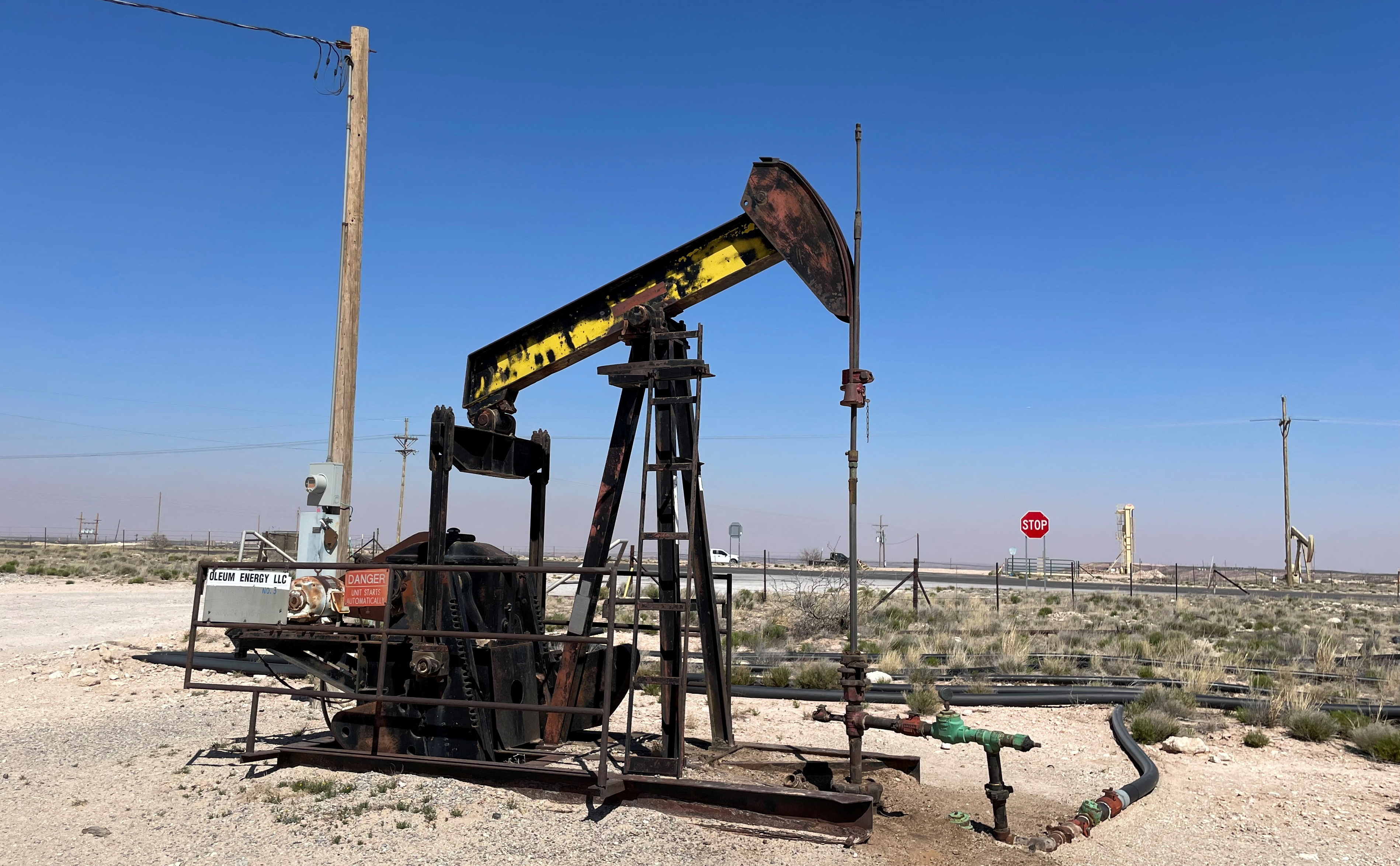
An oil pump jack is seen in Loco Hills, New Mexico, USA on April 6, 2023. REUTERS/Liz Hampton/File Photo Obtain licensing rights
DUBAI, Dec 2 (Reuters) – The Biden administration on Saturday released final rules aimed at curbing methane emissions from the U.S. oil and gas industry as part of a global plan to curb emissions that contribute to climate change.
The rules, developed over two years by US officials, were announced at the United Nations COP28 climate change conference in Dubai. The US and other countries attending the summit are expected to outline how to meet the 150-nation pledge two years ago to cut methane emissions by 30% between 2020 and 2030.
Methane tends to leak undetected into the atmosphere from drilling rigs, gas pipelines and other oil and gas equipment. It has a greater warming potential than carbon dioxide and breaks down faster in the atmosphere, so curbing methane emissions can have an immediate impact on curbing climate change.
“These new standards will help us meet our international commitments to aggressively tackle climate change, while improving air quality for communities across the country,” US Environmental Protection Agency Administrator Michael Reagan said at a press conference in Dubai.
Vice President Kamala Harris cited the methane regulations as one of several U.S. initiatives to combat global warming, saying the Biden administration has restored America as a global leader in the fight against climate change.
“Today, we demonstrate through action how the world can and must confront this crisis,” Harris told the conference.
The EPA’s new policies would ban routine flaring of natural gas produced by newly drilled oil wells, require oil companies to monitor leaks from well sites and compressor stations, and establish a plan to use third-party remote sensing to detect large methane releases. super emitters,” the company said in a statement.
The rules would prevent 58 million tons of methane from reaching the atmosphere between 2024 and 2038 — the equivalent of all carbon dioxide emissions from the power industry in 2021, the EPA added.
New Mexico Gov. Michael Lujan Grisham, whose state has already implemented methane regulations that serve as a model for the EPA, said the new methane rules lead the United States by example and encourage other countries to take similar steps.
“Now that we have credibility, we can demonstrate to the whole world that we can hold polluters accountable and move the needle,” he told a press conference.
Some environmental groups applauded the rules.
“Stronger methane standards are necessary to curb climate pollution and better protect the health and safety of workers and communities living near fossil fuel extraction,” Jill Dauber, Earthjustice’s vice president of litigation for climate and energy, said in a statement.
The rule would generate up to $7.6 billion annually in climate and health benefits by 2038, according to the EPA. It could recover up to $13 billion in natural gas over time.
The rule differs somewhat from EPA draft proposals released in 2021 and 2022, in part by giving industry more time to comply.
The agency also modified the Super Emitter Program to allow third parties to send information about methane leaks directly to the EPA for verification. Previously, they could send information directly to companies, which the oil and gas industry said would put more power in the hands of environmental groups looking for methane leaks.
The American Petroleum Institute, an oil and gas industry trade group, said it would review the rule.
“To be truly effective, this rule must balance emissions reductions and continue to meet rising energy demand,” API senior vice president of policy, economics and regulatory affairs Dustin Meyer said in a statement.
Exxon CEO Darren Woods told Reuters at COP28 that it still had to review the rule but: “Conceptually, as long as it’s a fair and good policy we’re in favor of it.”
BP said it “actively cooperated” with the EPA as it worked on the final rule and “welcomes the finalization.”
Reporting by Nicola Groom and Valerie Wolkovic in Dubai; Editing by Diane Croft and Giles Elgood
Our Standards: Thomson Reuters Trust Principles.